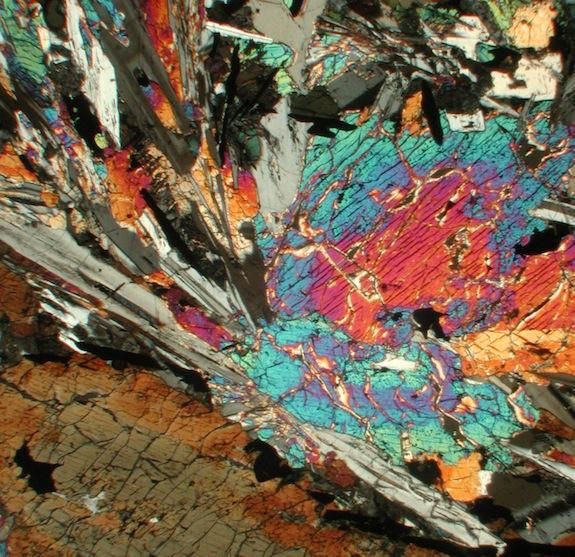How the Moon Was Made
A new type of evidence found in lunar rocks indicates that an enormous collision between a young Earth and a Mars-sized object formed the moon
/https://tf-cmsv2-smithsonianmag-media.s3.amazonaws.com/filer/20121017120140Moon-Collision-small.jpg)
It’s hard to take a look at a full moon, so different than any other object in the night sky, and not wonder how it formed. Scientists have proposed several different mechanisms to explain the formation of the moon—that it came from material flung off of the Earth due to centrifugal force, that it was already formed when captured by the Earth’s gravity and that the Earth and moon both formed together during the birth of the Solar System.
Starting in the 1970s, though, experts began to suspect a rather more dramatic creation story: that the moon formed as the result of a massive collision between a Mars-sized protoplanet and a young Earth, some 4.5 billion years ago. In this theory, roughly 30 million years after the Solar System began to form, the smaller protoplanet (often called Theia) would have slammed into the Earth at nearly 10,000 miles per hour, generating an enormous explosion. Much of Theia’s denser elements, such as its iron, would have sunken into Earth’s core, whereas lighter mantle material from both Earth and Theia would have been vaporized and ejected into orbit, soon coalescing into what we now know as the moon, held in place by Earth’s gravity.
We’ve already found several indirect pieces of evidence for this idea: moon rocks collected by Apollo show oxygen isotope ratios similar to those on earth, and the moon’s movement and rotation indicate that it has an unusually small iron core, as compared with other objects in the Solar System. We’ve even observed belts of dust and gas around distant stars that likely formed in similar collisions between rocky bodies.
Now, scientists from Washington University in St. Louis and elsewhere, reporting today in Nature, have uncovered an entirely new type of proof for this theory of moon formation. The researchers closely examined 20 different lunar rock samples collected from distant locations on the moon during the Apollo missions and discovered the first direct physical evidence of the type of massive vaporization event that would have accompanied the hypothesized impact.

In scrutinizing the lunar rocks, the geochemists found a molecular signature of vaporization in the type of zinc isotopes embedded in the samples. Specifically, they detected a slight irregularity in the amount of heavier zinc isotopes, as compared to lighter ones.
The only realistic explanation for this type of distribution, they say, is a vaporization event. If Theia collided with the Earth billions of years ago, the zinc isotopes in the resulting vaporization cloud would have condensed into the rapidly-forming moon in a very particular way.
“When a rock is melted and then evaporated, the light isotopes enter the vapor phase faster than the heavy isotopes,” says Washington University geochemisty Frédéric Moynier, the lead author of the paper. “You end up with a vapor enriched in the light isotopes and a solid residue enriched in the heavier isotopes. If you lose the vapor, the residue will be enriched in the heavy isotopes compared to the starting material.”
In other words, the vapor that would have escaped out to space would be disproportionately rich in the light zinc isotopes, and the rock left behind would have an excess of heavy ones. That’s exactly what the team found in the lunar rocks they examined. To strengthen the study, they also looked at rocks from Mars and Earth, comparing the isotope distribution in each sample—and the excess of heavy isotopes in the lunar rocks was ten times greater than that of the others.
Of course, the study isn’t definitive proof that the moon formed from a collision, but unlike with the previous circumstantial evidence, it’s difficult to come up with an alternate theory that would explain the signature found in the rocks. We can’t go back 4.5 billion years to know for sure, but we’re closer than ever to knowing just how our planet ended up with its moon.
/https://tf-cmsv2-smithsonianmag-media.s3.amazonaws.com/accounts/headshot/joseph-stromberg-240.jpg)
/https://tf-cmsv2-smithsonianmag-media.s3.amazonaws.com/accounts/headshot/joseph-stromberg-240.jpg)